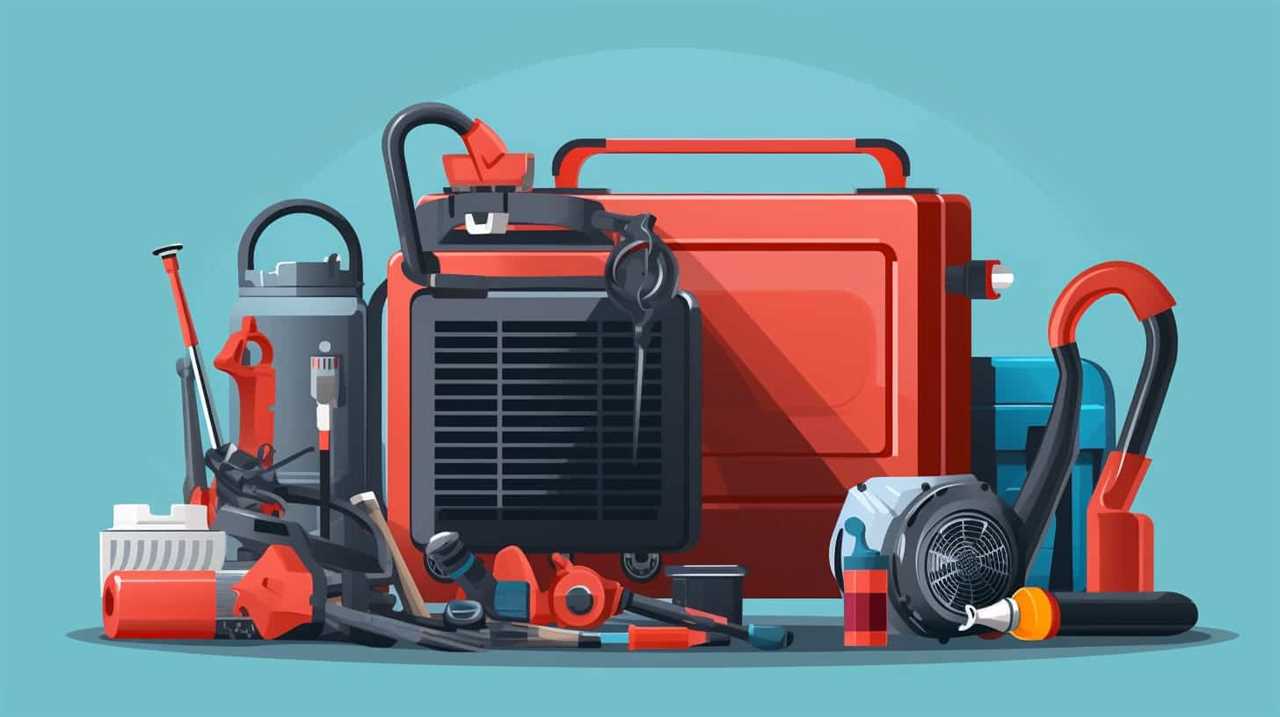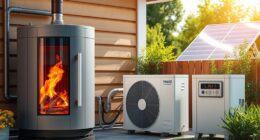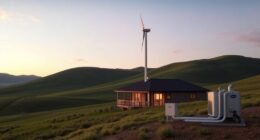Are you prepared to transform the heating and cooling system in your home?
Look no further than our comprehensive guide to heat pump installation and maintenance.
We’ll walk you through the basics of this cutting-edge technology, explore different types of heat pumps for renewable energy, and provide a step-by-step guide to installation.
Plus, we’ll tackle common maintenance issues and share tips for optimizing your heat pump’s efficiency.
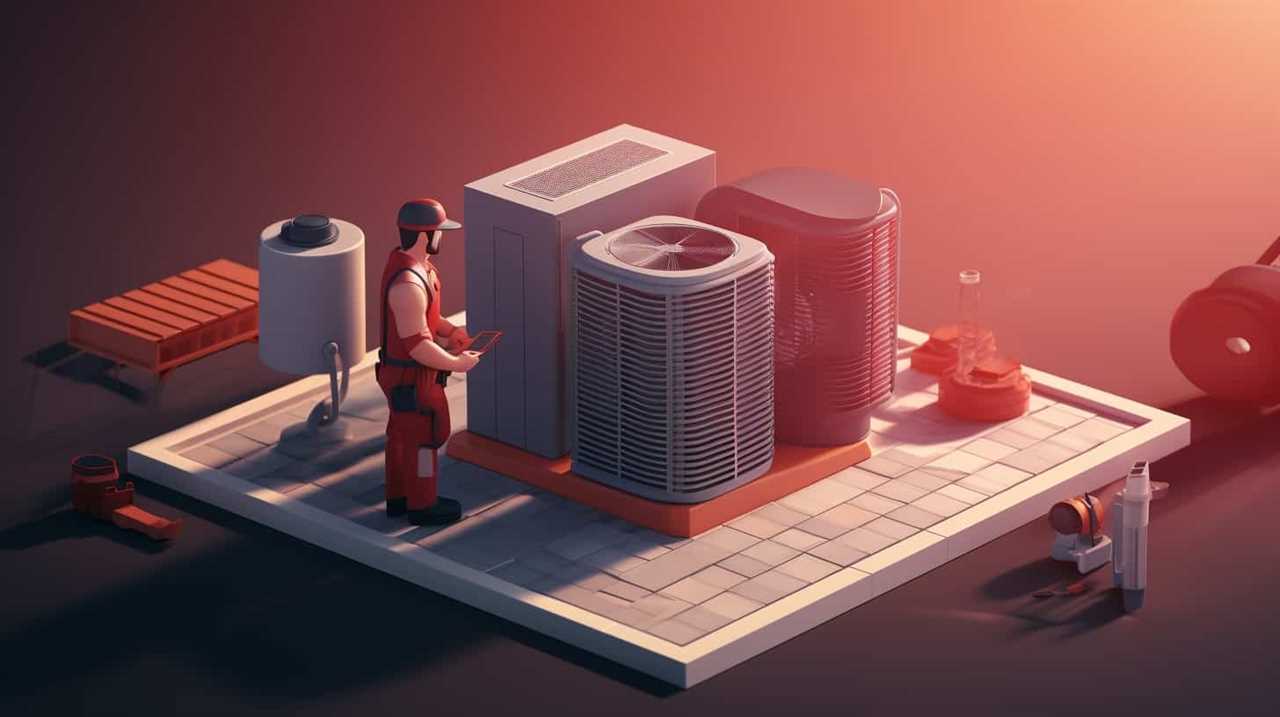
Get ready to take your home comfort to the next level!
Key Takeaways
- Heat pump technology is energy efficient and environmentally friendly.
- There are two main types of heat pumps: air source and ground source.
- Factors to consider before installing a heat pump include energy efficiency, cost analysis, and location considerations.
- The installation process involves locating the ideal spot, mounting the outdoor unit, wiring the heat pump, and performing a thorough check after installation.
The Basics of Heat Pump Technology
We will start by understanding the three key components of a heat pump system.
Heat pump technology is known for its energy efficiency and positive environmental impact.
The first component is the outdoor unit, which contains the compressor and the condenser coil. It’s responsible for extracting heat from the outside air or ground and transferring it to the indoor unit.
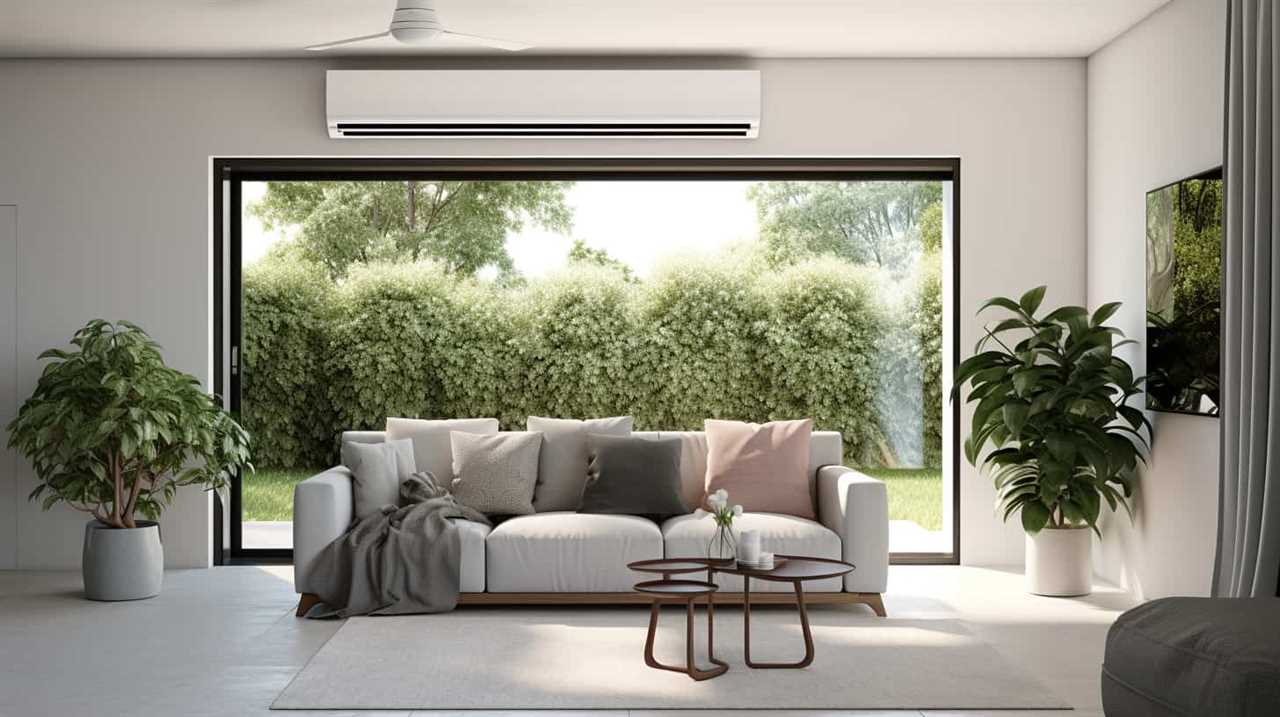
The second component is the indoor unit, which consists of the evaporator coil and the blower. It’s responsible for distributing the heated or cooled air throughout the building.
The third component is the refrigerant, which circulates between the outdoor and indoor units, absorbing and releasing heat.
Types of Heat Pumps for Renewable Energy
There are two main types of heat pumps for renewable energy: air source heat pumps and ground source heat pumps. Air source heat pumps extract heat from the outdoor air and transfer it into a building to provide heating. They work by utilizing a refrigerant that absorbs heat from the air and then releases it into the indoor space. On the other hand, ground source heat pumps, also known as geothermal heat pumps, extract heat from the ground or water sources and use it to heat a building. These heat pumps take advantage of the relatively stable temperature of the earth to provide efficient heating and cooling. Here is a comparison table that highlights the key differences between air source heat pumps and ground source heat pumps:
| Air Source Heat Pumps | Ground Source Heat Pumps | |
|---|---|---|
| Efficiency | Lower | Higher |
| Installation | Easier and less costly | More complex and expensive |
| Space requirement | Less space needed | More space needed |
Both types of heat pumps offer renewable energy solutions for heating and cooling, with ground source heat pumps providing greater efficiency and requiring more installation space.

Factors to Consider Before Installing a Heat Pump
Before installing a heat pump, it’s important to consider several factors. One of the key factors to consider is the energy efficiency of the heat pump. Energy efficiency plays a crucial role in determining the long-term cost savings and environmental impact of the system. It’s recommended to look for heat pumps that have high Seasonal Energy Efficiency Ratio (SEER) and Heating Seasonal Performance Factor (HSPF) ratings, as they indicate better energy efficiency.
Another factor to consider is conducting a cost analysis. This involves evaluating the upfront cost of purchasing and installing the heat pump, as well as the ongoing operating and maintenance costs. It’s important to consider the potential energy savings and payback period to determine the overall cost-effectiveness of the heat pump.
Step-by-Step Guide to Heat Pump Installation
Let’s start by outlining the key points to consider when it comes to heat pump installation.
First, we’ll discuss the required tools and equipment to ensure a smooth installation process.

Then, we’ll provide an overview of the installation process itself, highlighting the important steps to follow.
Required Tools and Equipment
We will now cover the tools and equipment needed for the installation of a heat pump.
When it comes to heat pump installation, having the right tools and equipment is crucial for a successful and efficient process. Here are the necessary tools and equipment for heat pump installation:
-
Heat pump installation tools:

-
Screwdrivers (Phillips and flathead)
-
Adjustable wrenches
-
Pipe cutters
-
Flaring tool
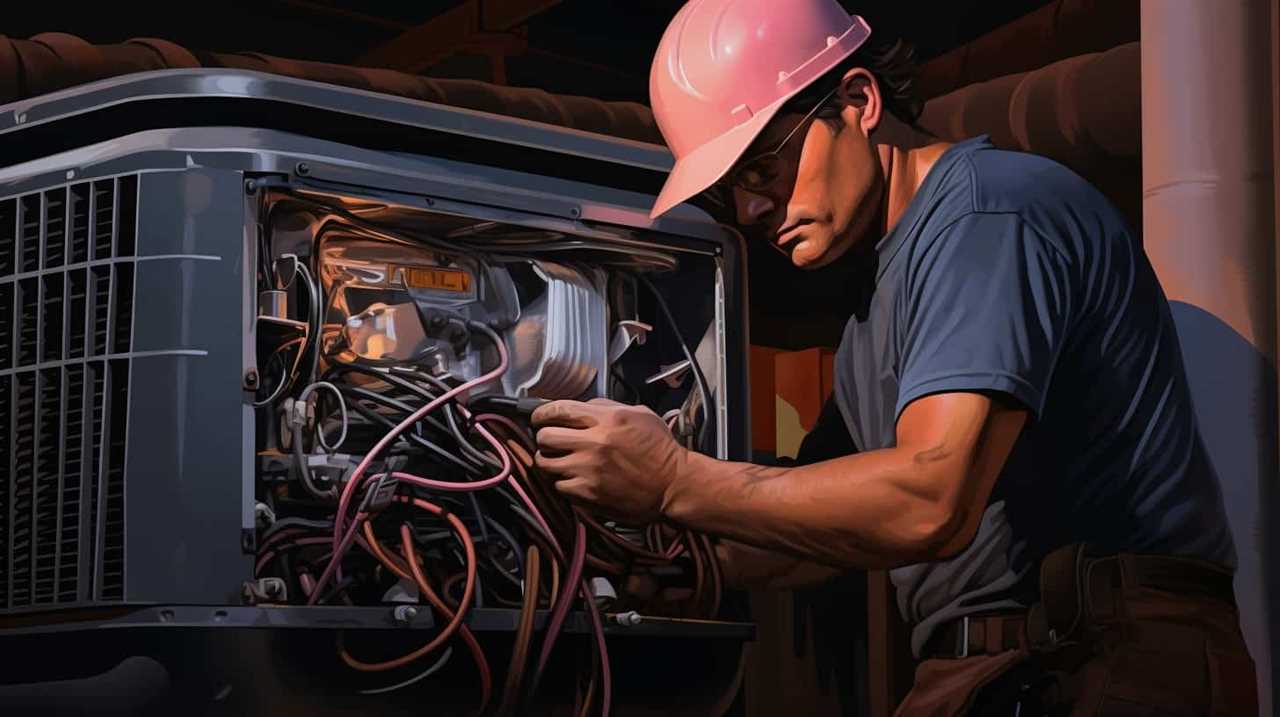
-
Torque wrench
-
Pipe bender
-
Vacuum pump
-
Manifold gauge set
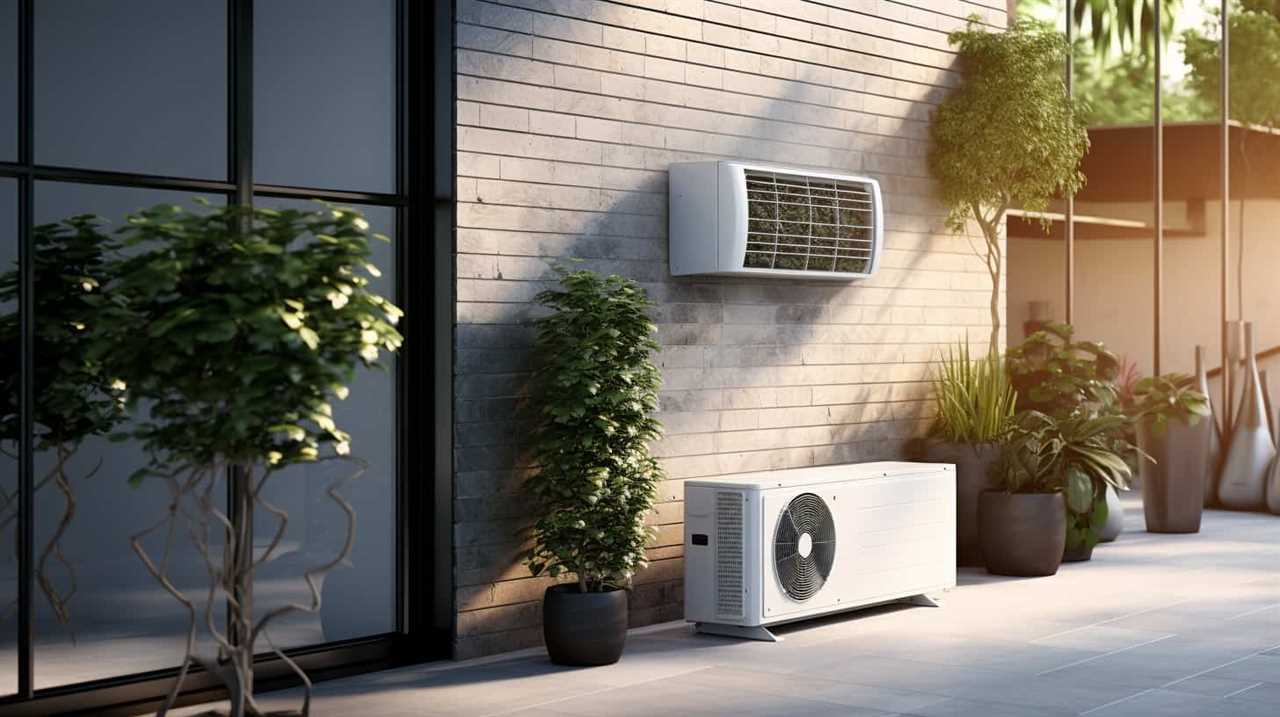
-
Leak detector
-
Equipment for heat pump maintenance:
-
Coil cleaner
-
Fin comb
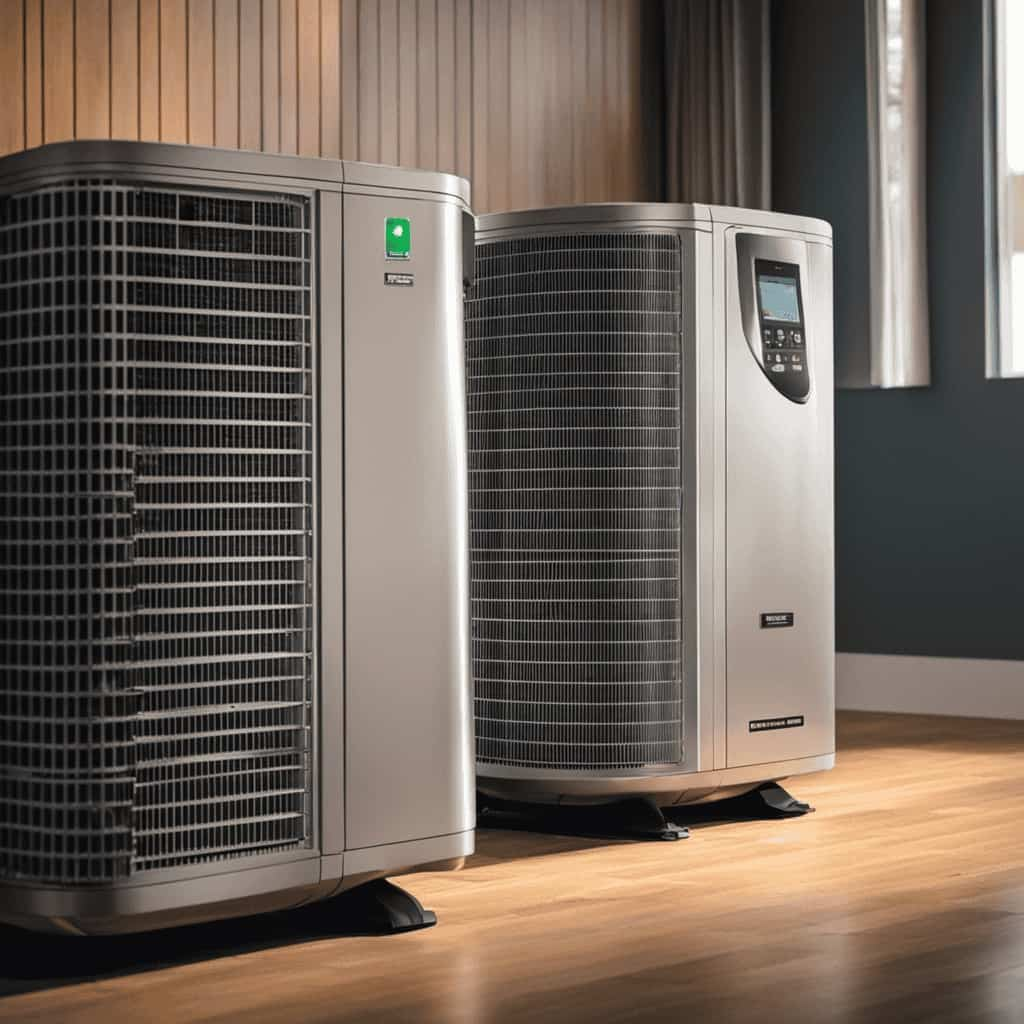
-
Condensate pump
-
Digital multimeter
-
Refrigerant scale
-
Pressure gauge

These tools and equipment will ensure that the installation and maintenance of your heat pump are done with precision and efficiency, ultimately enhancing the performance and lifespan of your system.
Installation Process Overview
To begin the installation process of a heat pump, we’ll first gather all the necessary tools and equipment. This includes a drill, screwdriver, wrench, tubing cutter, and vacuum pump. Once we’ve all the tools ready, we can proceed with the installation.
The first step is to locate the ideal spot for the heat pump, considering factors such as accessibility and noise reduction. Next, we’ll mount the outdoor unit on a sturdy base and connect it to the indoor unit using refrigerant lines. After that, we’ll wire the heat pump to the electrical panel and ensure proper grounding.
Once the installation is complete, we’ll perform a thorough check to ensure everything is working correctly. The installation process may vary depending on the specific heat pump model and the complexity of the setup.

Taking into account the heat pump installation cost, the benefits of heat pump installation are numerous, including energy efficiency, reduced carbon footprint, and cost savings in the long run.
Maintenance Tips and Tricks
For proper heat pump installation and maintenance, it’s important to follow a step-by-step guide that includes regular cleaning, checking and replacing filters, inspecting and lubricating fan motors, and scheduling professional maintenance visits. Maintaining a regular maintenance schedule for your heat pump will ensure optimal performance and longevity.
Here are some troubleshooting techniques to help you keep your heat pump in excellent condition:
-
Regular Cleaning:

-
Clean the outdoor unit regularly to remove dirt, debris, and leaves that may obstruct airflow.
-
Clean or replace air filters every 1-3 months to maintain good indoor air quality and prevent system strain.
-
Inspecting and Lubricating Fan Motors:
-
Inspect fan motors annually for any signs of wear and tear.
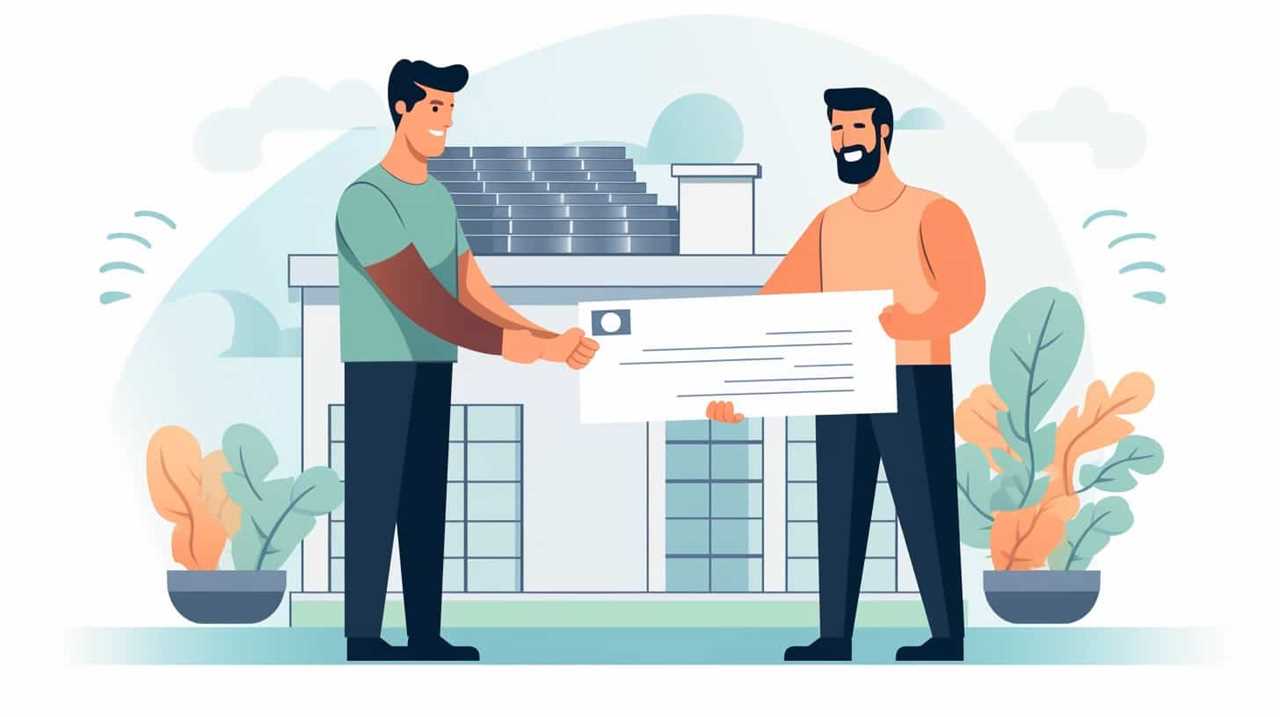
-
Lubricate fan motors as recommended by the manufacturer to ensure smooth operation and reduce friction.
Common Maintenance Issues and Solutions for Heat Pumps
When it comes to maintaining heat pumps, two common issues that can arise are frequent temperature fluctuations and inadequate airflow causing inefficiency.
Temperature fluctuations can be caused by a variety of factors, such as incorrect thermostat settings, dirty air filters, or refrigerant leaks.
Inadequate airflow, on the other hand, can be a result of clogged air filters, blocked vents, or issues with the blower motor.

Identifying and addressing these issues promptly is essential to ensure the optimal performance and efficiency of heat pumps.
Frequent Temperature Fluctuations
One common maintenance issue we often encounter with heat pumps is frequent temperature fluctuations. These fluctuations can have a significant impact on energy consumption and overall system performance. Here are some key points to consider when addressing this issue:
-
Proper thermostat calibration: Ensure that the thermostat is accurately calibrated to accurately measure and maintain the desired temperature. Inaccurate calibration can lead to frequent temperature fluctuations.
-
Airflow obstruction: Check for any obstructions in the airflow, such as dirty filters or blocked vents. Improper airflow can cause temperature imbalances and fluctuations.
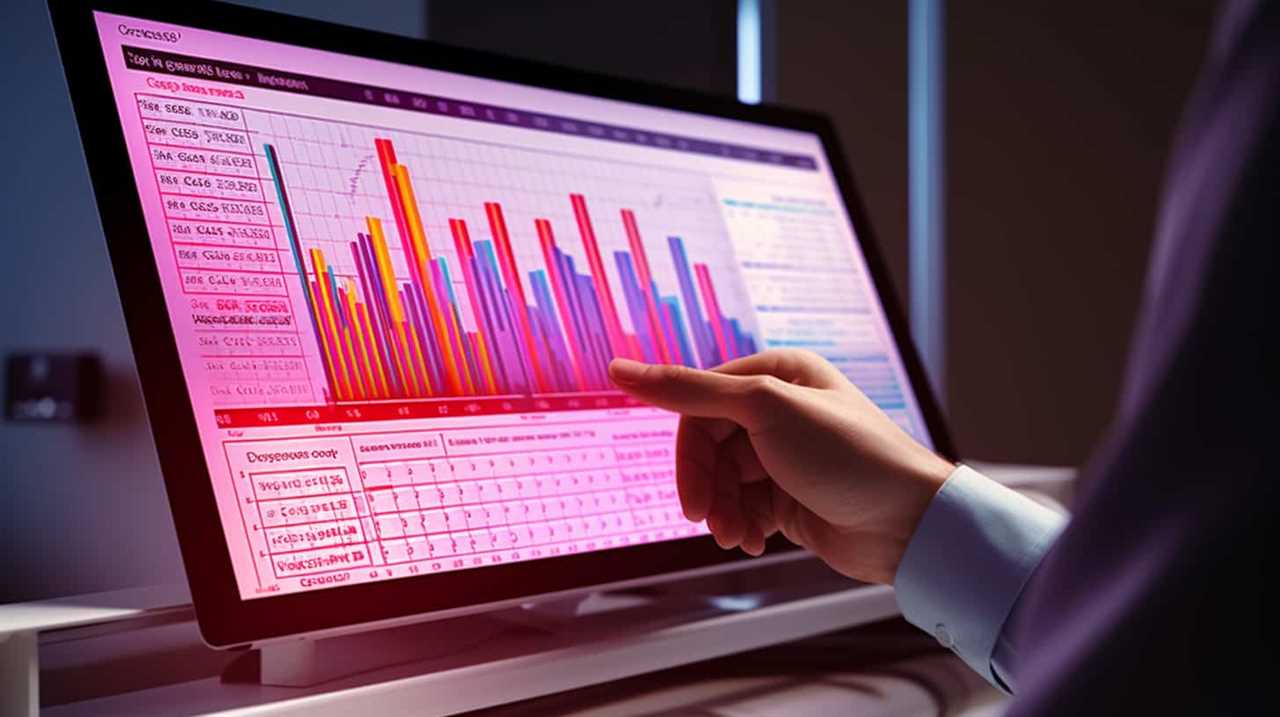
-
Refrigerant levels: Low refrigerant levels can cause temperature fluctuations. Regularly check and maintain the appropriate refrigerant levels in the heat pump system.
-
Regular maintenance: Schedule regular maintenance checks to ensure that all components of the heat pump are functioning properly. This can help identify and resolve any issues that may lead to temperature fluctuations.
Inadequate Airflow Causing Inefficiency
We often encounter inadequate airflow as a common maintenance issue that causes inefficiency in heat pumps. This can be addressed by implementing solutions.
Airflow issues can arise due to various reasons, such as dirty air filters, blocked vents, or faulty fan motors. These issues restrict the flow of air, leading to reduced efficiency and performance of the heat pump.
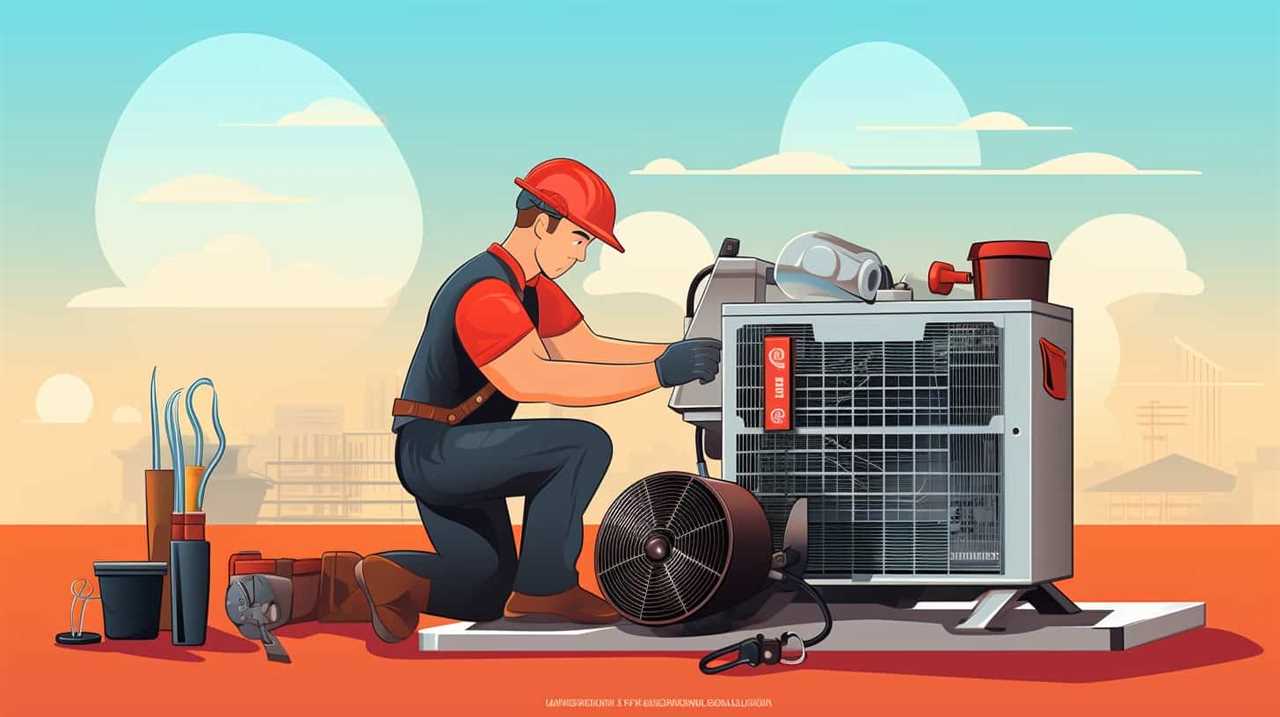
To troubleshoot these problems, it’s essential to start by checking and replacing dirty air filters regularly. Additionally, ensuring that vents are clean and unobstructed can improve airflow. If the fan motor isn’t functioning properly, it may need to be repaired or replaced.
Regular maintenance and inspection of the heat pump system can help identify and address airflow issues promptly, ensuring optimal performance and energy efficiency.
Tips for Optimizing the Efficiency of Your Heat Pump
To achieve maximum efficiency, we should regularly clean and replace air filters in our heat pump. This simple maintenance task is crucial as it ensures proper airflow and prevents dust and debris from clogging the system, optimizing energy consumption and maximizing heat output.
Additionally, there are other steps we can take to further optimize the efficiency of our heat pump:
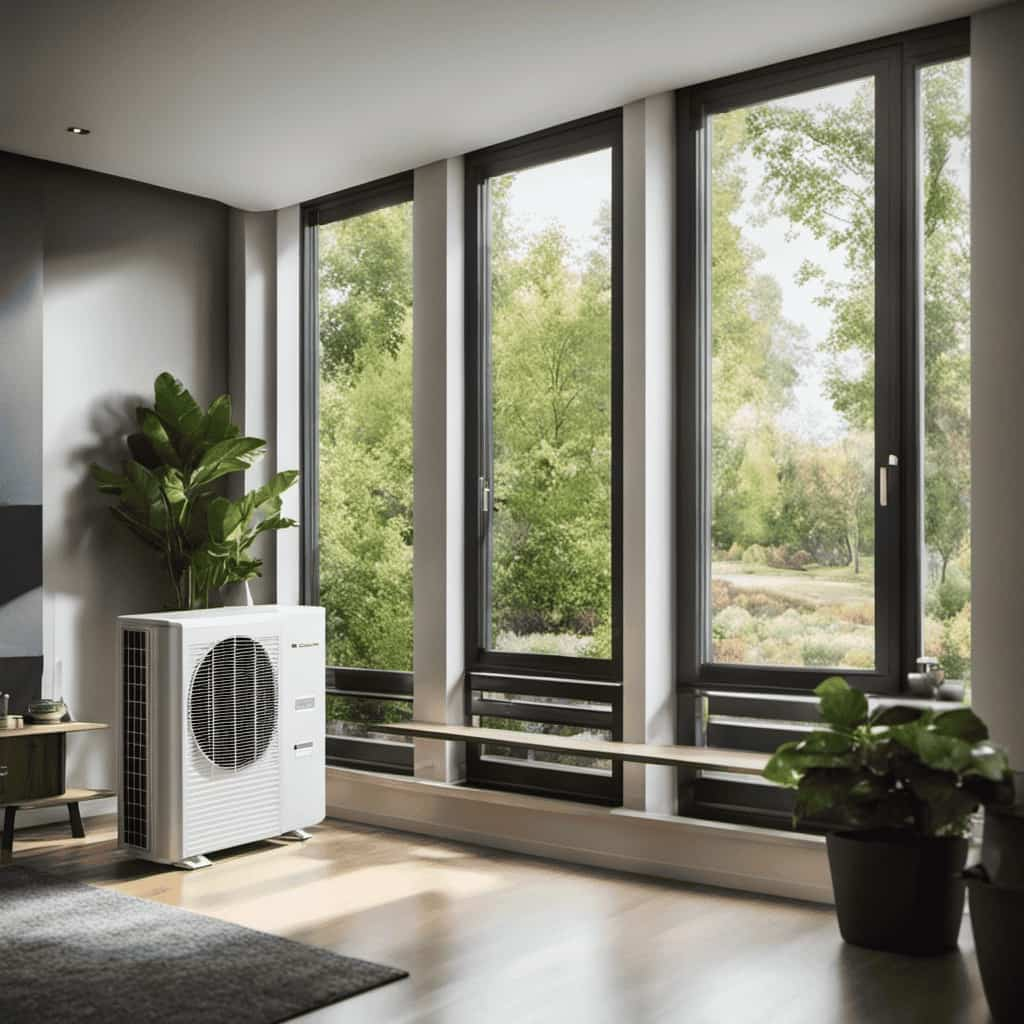
- Schedule regular professional maintenance to identify and address any potential issues before they become major problems.
- Keep the outdoor unit clear of debris, such as leaves, grass, and shrubs, to allow for adequate airflow.
- Install a programmable thermostat to set temperature schedules based on our needs, reducing unnecessary energy usage.
- Ensure that the ductwork is properly sealed and insulated to minimize heat loss.
By following these tips, we can enjoy a more energy-efficient heat pump system that provides optimal heating and cooling performance.
Now, let’s explore the next section on troubleshooting common problems with heat pump operation.
Troubleshooting Common Problems With Heat Pump Operation
Now, let’s address some common problems that can occur with our heat pump operation and how we can troubleshoot them.
One of the issues that can arise is refrigerant leaks. These leaks can lead to decreased cooling or heating efficiency and can even cause damage to the compressor. To troubleshoot refrigerant leaks, we must first locate the source of the leak using a refrigerant leak detector. Once identified, the leak can be repaired by either replacing the damaged component or sealing the leak with a compatible sealant.
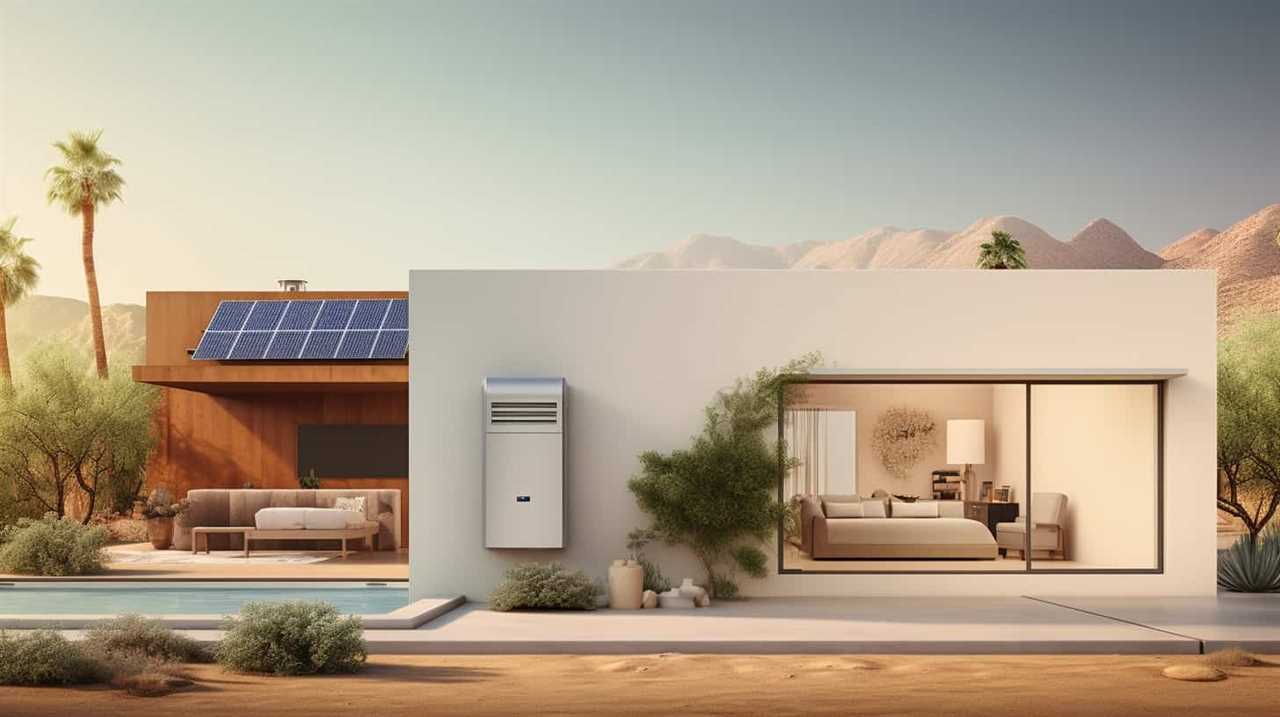
Another common problem is electrical malfunctions. These can manifest as the heat pump not turning on or the fan not working. To address electrical malfunctions, we need to check the power supply, fuses, and circuit breakers. If necessary, we may have to replace faulty components or call a professional electrician for assistance.
Frequently Asked Questions
What Are the Main Differences Between Air Source, Ground Source, and Water Source Heat Pumps?
Air source, ground source, and water source heat pumps differ in their energy sources. Air source heat pumps use outdoor air, ground source heat pumps extract heat from the ground, and water source heat pumps utilize water bodies. The efficiency of each type varies.
How Long Does a Typical Heat Pump Installation Take?
Heat pump installation time can vary depending on factors such as system type, site conditions, and complexity. On average, a typical installation takes around 1-3 days. However, this timeline can be longer for more intricate projects.
Are There Any Government Incentives or Rebates Available for Heat Pump Installations?
Yes, there are government incentives and rebates available for heat pump installations. These incentives aim to promote energy savings and encourage the adoption of more efficient heating and cooling systems.
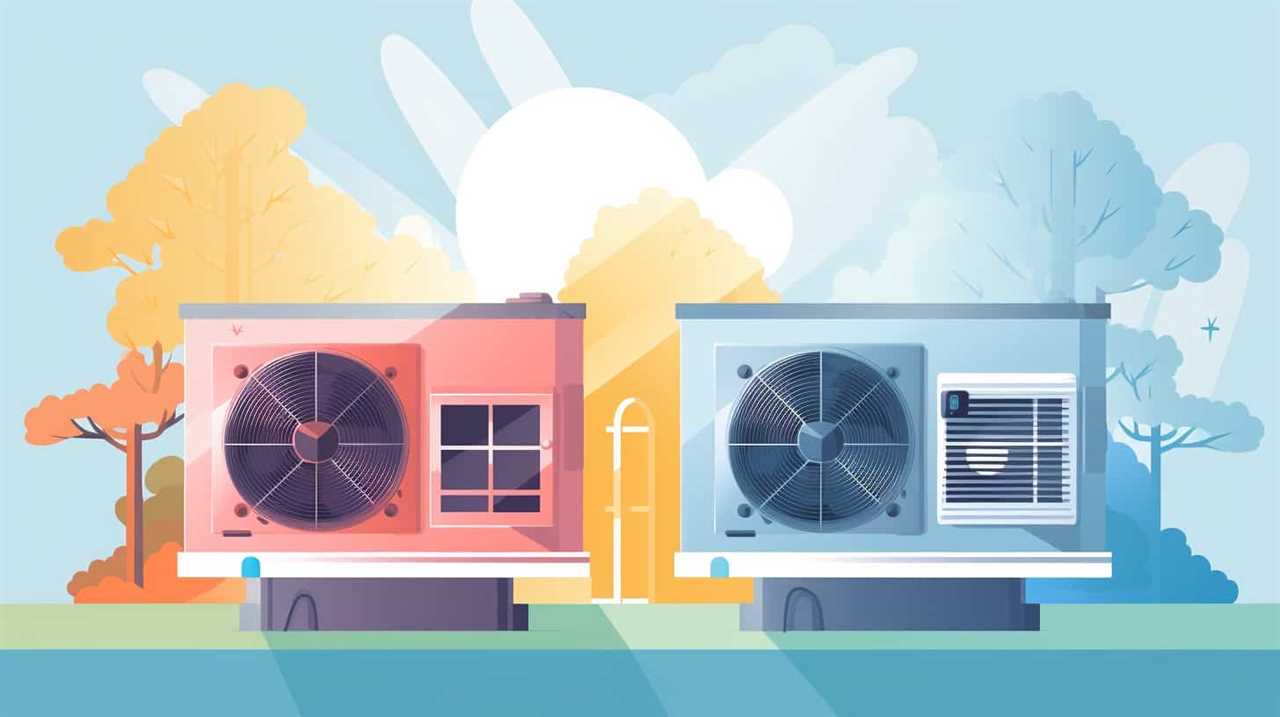
Can a Heat Pump Be Used for Both Heating and Cooling?
Yes, a heat pump can be used for both heating and cooling. It offers high efficiency and numerous benefits such as energy savings, environmental friendliness, and consistent comfort throughout the year.
What Is the Average Lifespan of a Heat Pump and When Should It Be Replaced?
On average, heat pumps have a lifespan of 15-20 years. However, the timing of replacement depends on factors such as maintenance, usage, and technological advancements. It is important to consider these factors when determining replacement timing.
Conclusion
In conclusion, heat pump technology offers an efficient and renewable solution for heating and cooling homes. By understanding the different types of heat pumps and considering various factors before installation, homeowners can make informed decisions.
Following a step-by-step guide for installation and addressing common maintenance issues, such as proper cleaning and regular servicing, will ensure optimal performance.

Remember, a well-maintained heat pump is like a well-oiled machine, delivering reliable comfort and energy savings.

